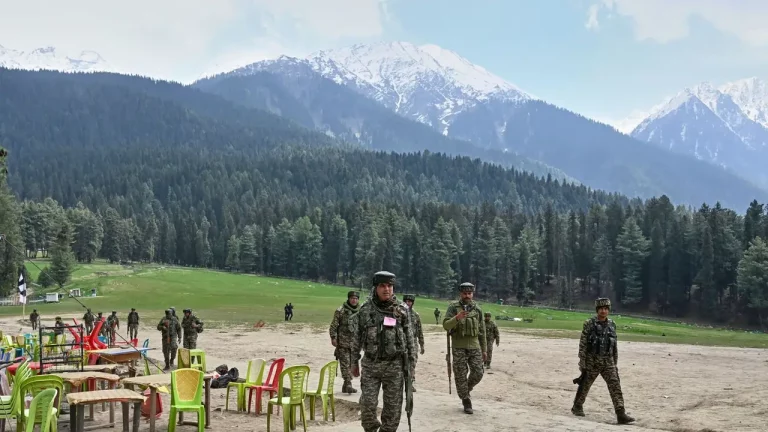In a remarkable display of military readiness, Indian Air Defence forces successfully intercepted a large-scale aerial assault from Pakistan targeting the Golden Temple and several civilian areas in Punjab on May 8. This high-stakes operation showcased the efficiency of the DRDO-developed AKASH missile systems as well as Swedish-made L-70 Air Defence Guns, which collectively ensured the protection of the revered religious site from incoming drones and missiles.
The thwarted attack was perceived as retaliation by Pakistan for India’s Operation Sindoor, enacted following the tragic Pahalgam terror attack on April 22, during which 26 civilians lost their lives, including a Nepalese national, at the hands of Lashkar-e-Taiba terrorists. India’s counteroffensive successfully targeted nine terror camps throughout Pakistan and Pakistan-occupied Jammu and Kashmir (PoJK), concentrating on high-value locations such as the Lashkar-e-Taiba headquarters in Muridke and a Jaish-e-Mohammed base in Bahawalpur. Indian officials have reaffirmed that the operation was conducted without targeting any civilian or military infrastructure on the Pakistani side.
Image footage from Amritsar demonstrated the effectiveness of the Indian Army’s air defence systems, including the upgraded L-70 Air Defence Guns, underscoring how these measures shielded the Golden Temple and surrounding cities from missile and drone attacks.
As Major General Kartik C Seshadri, General Officer Commanding of the 15 Infantry Division, noted, the possibility of such a retaliatory strike was anticipated. “Based on actionable intelligence, we reinforced air defence assets to create a protective dome over key sites, especially the Golden Temple,” he stated.
In the early hours of May 8, Indian radar systems detected multiple incoming threats. Responding swiftly, highly trained Air Defence units deployed interceptors that neutralized all hostile drones and missiles mid-air, preventing potential casualties or damage. Major General Seshadri emphasized, “Our personnel’s alertness and commitment ensured that not even a scratch touched the holy shrine.”
Central to this defense was the AKASH missile system, capable of engaging targets up to 45 km away, including fighter jets, cruise missiles, and unmanned aerial vehicles (UAVs). The upgraded Akash-NG (Next Generation) variant, boasting a range of 70–80 km and enhanced reaction time, significantly reinforced India’s air defence capabilities, alongside upgraded L-70 anti-aircraft guns.
The Pakistani offensive came amid increased cross-border tensions, including mortar shelling in regions like Rajouri, Poonch, Kupwara, and Baramulla, which claimed the lives of 13 individuals. In response to these developments, Union Home Minister Amit Shah emphasized the government’s steadfast commitment to national security during a high-level security meeting. “Operation Sindoor is a clear message: any attack on our people will receive a forceful and proportional response,” Shah proclaimed.
This incident highlights the critical role of air defence systems not only in achieving battlefield superiority but also in safeguarding cultural and religious heritage. The successful defense of the Golden Temple serves as a testament to India’s technological preparedness, intelligence coordination, and dedication to protecting its citizens and significant monuments during times of crisis.
















